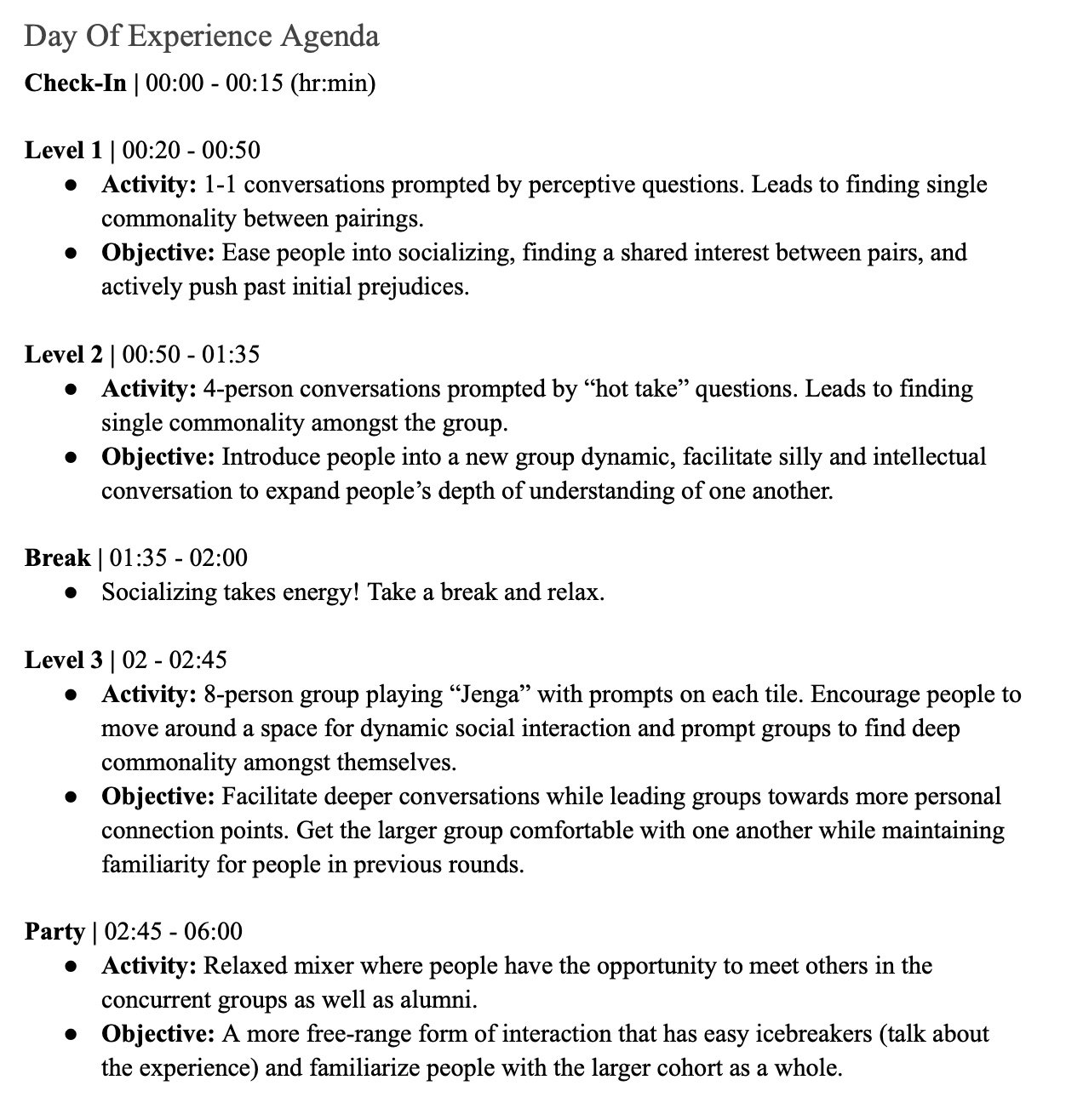#Cohort
3D design of the #Cohort space
4
Stages
Experience Designer
The #Cohort team sought to design an experience that facilitates new connections, encourages consistent engagement, and fosters deep communities in post-graduate life.
The result is a 3-staged experience for strangers to build connections and a community space for friend engagement.
1
Unforgettable Experience
1
Community
“45% of post-graduates experience severe depression and loneliness” - National Library of Medicine. In college, students are given structure to form close communities and build deep relationships. But this does not exist after college, and it leaves many post-grad students lonely and isolated, not familiar with making friends without the structure of clubs and classes.
The #Cohort team designed a solution that teaches postgraduates how to form deep connections outside university’s structure and nurture a space centered on relationship building. Players attend an experience that begins with highly structured activities and slowly lowers the amount of facilitation until they’re able to form deep connections on their own.
The experience starts and your sat across a stranger. You have something in common, you don’t know what. You have 30 minutes to figure it out. Time starts now.
This is how Level 1 begins. Once completed, you move to Level 2, where you and your partner are matched with another pair. There is a new, deeper commonality you share. This continues to Level 3, where four becomes 8. The similarities start surface level - you both grew up in San Francisco - but grow to be specific and deeper - you all fear attachment after being cheated on. The experience slowly walks you through building these deeper connections with activities and prompts until you no longer need it’s assistance. Now, you are prepared to form even more connections at the #Cohort party.
The major touch points players go through during the #Cohort experience
Creating The Experience
The process began with research and user interviews to answer the question - Why do post-graduates struggle so much to find community after university? Consolidating all this new knowledge led to a long ideation session, where a community-based experience and space was born.
Building out the experience design of space was working hand in hand with potential users about what activities and prompts would facilitate connection. As will best products, keeping users at the forefront was impertive.
Production Team
3D Designer: Amanda Nepo
Branding Designer: Kyler Caldwell
Business Operations: Khalil Mayden
Experience Designer: Tara Sandman-Long
The sensory engagement works to support the goal of creating comfort within a room of engagements and relationships. For touch, all the sitting areas have soft but firm cushions. The various levels of physical engagement - including prompt cards and Jenga blocks - allow players to engage with the environment and have physical representations of their goal.
Sound is utilized greatly to signify the transition between levels. A soft ticking will occur in the last minutes of each level, signaling players that it is time to guess at their commonality, and the true commonality will be revealed with excitable drum roll. The eye will be pleased with a bright and warm color scheme that invokes fun and joy in a mature fashion to elevate the experience.
The vestibular is supported through activities that require little physical movement and a lack of dizzying movements needed to go through the experience.The proprioceptive senses are supported through large hallways and walking spaces that allow the body to easily maneuver through the areas.
















